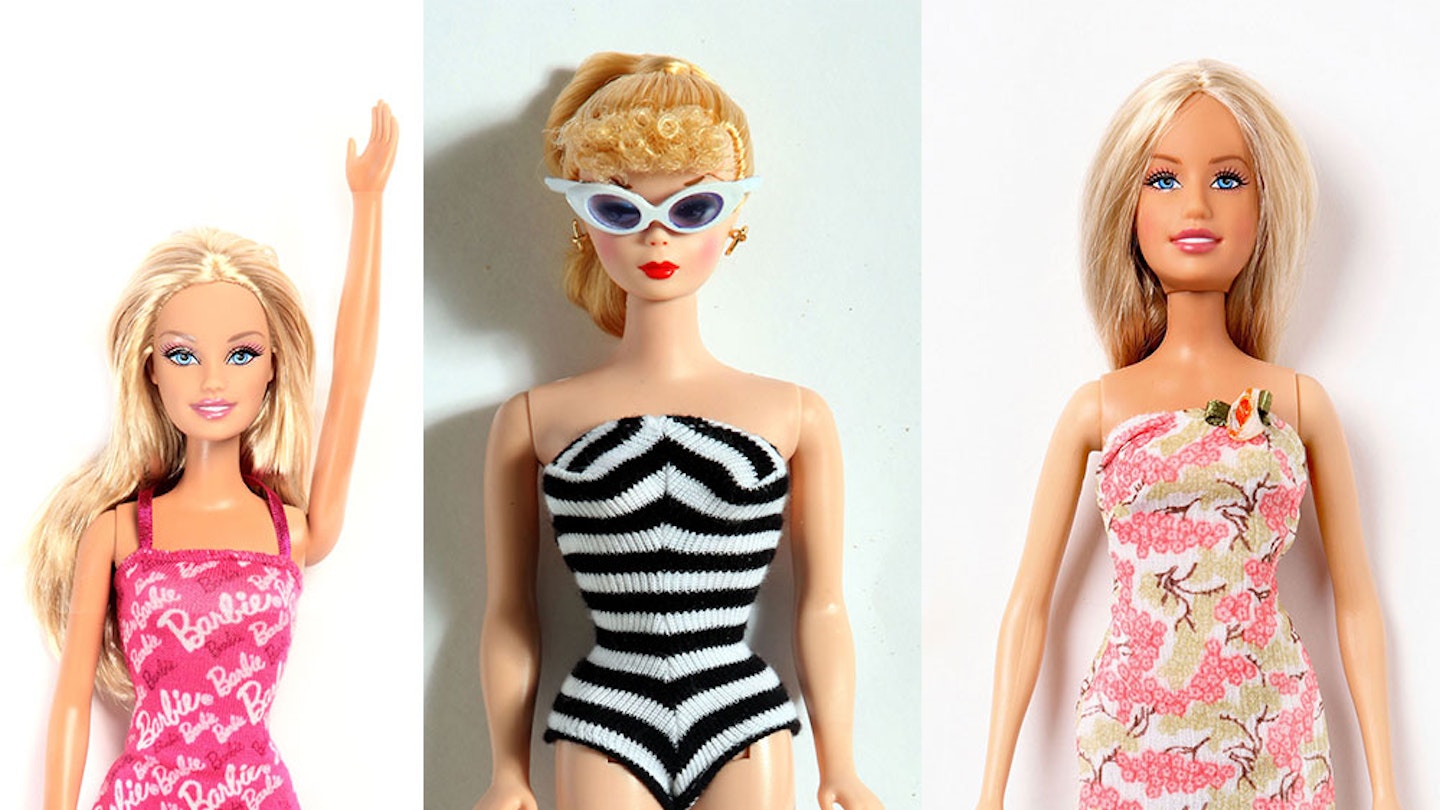In a modern world, full of hi-tech gadgets and gizmos, it’s wonderful to see that the humble doll still hasn’t entirely lost its charm for children. Every year new dollies hit the shelves, tempering a whole new generation into a kind of make-believe we've loved for decades.
Of all the dolls on the toy market, though, one has more than stood her ground and that has to be Barbie. So to celebrate her continued success and our life-long love of dolls, we’re taking a nostalgic look at her history and the story behind the other dolls that gave us hours of fun in the land of pretend.
How Barbie was created
Barbie was created when Ruth Handler was watching her daughter Barbara playing with paper dolls so began experimenting with a 3D doll for girls.
Modelled on her own daughter, yet mirroring the sophisticated glamour of Fifties film stars such as Marilyn Monroe and Rita Hayworth with her arched brows, curly hair and coy glance, Barbie was first presented at the New York Toy Fair in 1959.
Into the Sixties, Barbie acquired ‘sleep eyes’ that opened and closed as well as bendable legs. In 1965 she even made history when she went to the moon (as astronaut Barbie) a whole four years before Neil Armstrong got there!

Over the years, Barbie has had more than 150 different jobs, from doctor to rock star – she even ran for President in 1992. There have also been countless Barbies modelled on famous faces starting with a Twiggy Barbie in 1967, followed by the likes of Cher, Audrey Hepburn and Diana Ross, to name a few.
In 2016 Barbie heeded ongoing protests that she didn’t reflect the diversity of women by creating a new range of Barbies that came in four different body types and seven different skin tones.
Our lives in dolls - a little bit of history
Chatty Cathy
While dolls have been around in one form or another since ancient Egyptian times, one of the earliest plastic dolls we remember is Chatty Cathy, who was born in 1959, the same year as Barbie. We were mesmerised by the way she’d chat away to us with just a pull of a string in her back.

But with only 11 phrases in her repertoire, from ‘I love you’ to ‘I hurt myself' we can imagine how her repetitive chat probably grated on our parents. Thankfully, in 1963 a few more phrases were added, voiced by the actress June Foray, who also lent her voice to many animated Disney characters.
The Sixties also game rise to a few spin-offs including Chatty Baby, Charmin' Chatty and Singing' Chatty.
Stylish Sindy
If Chatty Cathy always had the look of a more homespun, traditional doll, very reminiscent of the Fifties, Sindy was definitely her trendier, more daring younger cousin who told us the Sixties had well and try arrived.

Launched in 1963 – with a promotional gramophone record to introduce her – she reflected the growing idea of teenagers and had everything a Sixties teen could want with clothes in the style of Mary Quant and Twiggy, as well as a handsome boyfriend called Paul.
As ‘the girl you loved to dress’, so the adverts told us, she was a dedicated follower of fashion with a huge wardrobe of designer clothes and accessories and later even got her own house and car. Her girl-next-door look made her even more popular than Barbie in Britain and in 1968 and 1970 she was the UK's best-selling toy.
Tressy
Another iconic doll that really hit the teenage market was Tressy, the doll with the hair that grows. First trademarked in 1963, you’ll remember she had a long swaithe of hair that could be pulled out the top of her head when you pushed a button on her midriff, before winding the hair back with a magic key in her back (which all sounds rather painful now when you think about it).
But her long locks meant we could brush, wash and create all kinds of ambitious styles with Tressy’s hair.
Tiny Tears

Just as hypnotising, if not quite as stylish as Tressy, was the hugely popular Tiny Tears, launched in 1966 in the UK, with the ability to both cry and wet herself (charming!) We loved how her eyes gradually closed when rocking to sleep and she made us feel like proud mums.
Boys liked dollies too!
Girls weren’t the only ones to like dolls, as our brothers coveted their Action Man, the brave and heroic figurine who could take on anything. Launched in 1966, they were based on the hugely popular GI Joe from the States. Meanwhile, both sexes liked Cabbage Patch Kids, the soft squidgy dolls brought in during the late Seventies as little people who needed to be adopted.
